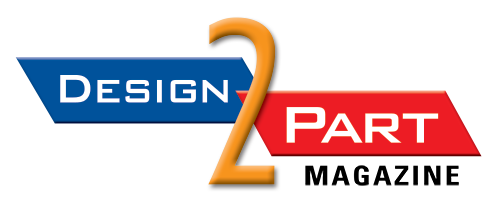By Mark Shortt
What do ultra-high-temperature composite materials for hypersonic aircraft have in common with aerogel thermal barriers for EV lithium-ion batteries? Long story short: In both cases, lots of engineering went into those materials.
Next generation product designs are increasingly relying on engineered materials to enable new leaps in product function and performance. Engineered materials span a wide range, from high-performance metals and thermoplastics to carbon fiber-reinforced and metal matrix composites, ceramics, aerogels, and metamaterials. They’re increasingly relied upon for high-tech products in industries like medical, defense, aerospace, automotive, telecom, clean energy, and electronics, including semiconductors.
Whether we’re talking high-altitude drones, solid-state EV batteries, biocompatible medical implants, or mission-critical submarine systems, engineered materials are providing parts with excellent impact strength, high temperature and corrosion resistance, thermal transfer capability, and biocompatibility, among other properties they can achieve.
The demand for highly engineered materials is particularly strong in the aerospace and defense industry, where high performance parts are increasingly being designed, manufactured, and assembled into equipment ranging from critical submarine systems to aircraft wings and frames for unmanned aerial systems (UAS), or drones.
“What we’re seeing now is the need for scale and volume in much more higher technology products in aerospace and defense,” said Alpine Advanced Materials CEO David Brantner, in an interview with Design-2-Part. “And when you look at the volumes needed there and the disruptions they’ve had in their supply chains because things have gotten a little too complex, there’s need not only for high end advanced materials, but for very proven and scalable manufacturing processes.”
The aerospace and defense technology firm BlueHalo recently partnered with Alpine Advanced Materials to develop a new injection molded chassis for its next generation Intense Eye (IE) Unmanned Aerial System (UAS). BlueHalo’s IE-V3 chassis incorporates a highly advanced, multi-scale reinforced thermoplastic material that reportedly provides the strength of aluminum at half the weight. (See the feature, Injection Molded Reinforced Polymer Plays Key Role in Next Generation Drone; and, in Design & Engineering Spotlight, New Unmanned Aerial System Features Stronger, Lighter Injection Molded Chassis.)
The carbon fiber-reinforced chassis is engineered to withstand harsh battlespace environments, combining high impact resistance with corrosion resistance, excellent thermal performance (a low coefficient of thermal expansion), and electromagnetic interference (EMI) attenuation. In addition to these characteristics, the material is compatible with a process—injection molding—that’s capable of producing parts in high volumes, Brantner said.
“We’re not limited to injection molding, and we have a development roadmap to get beyond injection molding,” he said in the interview. “But right now, the core baseline value proposition for Alpine is a very high end, advanced thermoplastic that is injection moldable because our customers really need scale.”
Additive Manufacturing Is a Technology to Watch
Some manufacturers are pairing highly engineered materials with the design flexibility of additive manufacturing processes, such as binder jet printing, to produce parts with complex geometries that would be difficult or impossible to achieve through other methods. To encourage more of this, the additive manufacturing technologies firm Desktop Metal is working to further its development of technical ceramics and cermet materials for use in its binder jet systems.
“Every day, Desktop Metal binder jet systems are being used to produce innovative ceramic products in a wide range of mission-critical sectors, including aerospace, automotive, energy, and more,” said Desktop Metal Founder and CEO Ric Fulop, in a recent release. “Our technology gives ceramic manufacturers incredible flexibility, not just in the geometric design, but also in the internal part structure and material properties.”
A young Syracuse, New York-based company, Vetted Tech Inc., is also leveraging additive manufacturing to bring out the benefits of engineered materials in high performance parts. (See the feature, Where ‘Veteran Enabled Transition Meets ‘Technology Enabled Design.’)
Vetted Tech uses some of its machines to print parts in 316L and 17-4 stainless steels, and others to print exotic metal parts in copper, tool steels, and Inconel 625. The company also dedicates separate machines to printing parts in a chopped carbon fiber-reinforced nylon. The material can be further reinforced with additional layers of continuous carbon fiber or continuous Aramid Kevlar fiber to give the part added strength, said Vetted Tech President Michael Mowins, in an interview with Design-2-Part.
“We thrive on the innovative process, on that nontraditional way of thinking, of being able to look at a part and say, ‘Okay, how are we going to do this?’” said Mowins. “Knowing the capabilities of our machine and what we’re able to do with outside-the-box thinking that you haven’t been able to do with a traditional subtractive manufacturing process, gives us that benefit.”
Today, additive manufacturing companies like Vetted Tech are operating at the intersection of powerful industry trends. Worldwide demand for additive manufacturing is rising and is widely expected to continue its climb through at least the end of the decade, according to market estimates. Supply chain gaps, deglobalization, and the need for greater self-sufficiency are driving an upward trend in reshoring, according to the Reshoring Initiative, as more OEMs retool their supply chains to mitigate risks by manufacturing in the United States.
At the same time, the U.S. Department of Defense is working to build its domestic defense industrial base by tapping into state-of-the manufacturing art technologies. Additive manufacturing has attracted fervent interest as a way to quickly provide critically needed parts to service members in the field. The ability to produce precision 3D printed metal and composite parts with fast turnarounds appears well-aligned with the needs of the defense and other critical industries that are looking to obtain complex, high-quality parts without supply chain delays.
